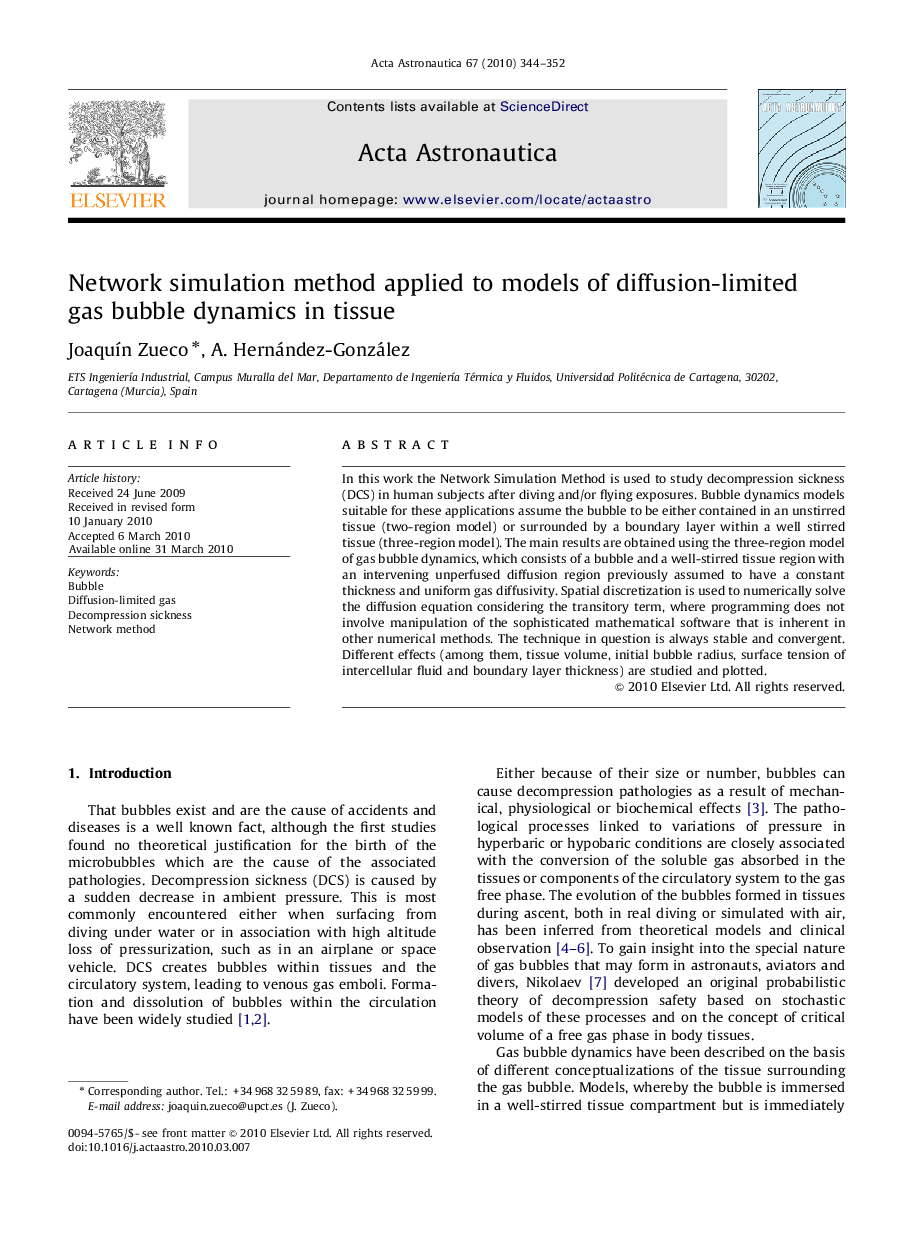| Article ID | Journal | Published Year | Pages | File Type |
|---|---|---|---|---|
| 1716231 | Acta Astronautica | 2010 | 9 Pages |
Abstract
In this work the Network Simulation Method is used to study decompression sickness (DCS) in human subjects after diving and/or flying exposures. Bubble dynamics models suitable for these applications assume the bubble to be either contained in an unstirred tissue (two-region model) or surrounded by a boundary layer within a well stirred tissue (three-region model). The main results are obtained using the three-region model of gas bubble dynamics, which consists of a bubble and a well-stirred tissue region with an intervening unperfused diffusion region previously assumed to have a constant thickness and uniform gas diffusivity. Spatial discretization is used to numerically solve the diffusion equation considering the transitory term, where programming does not involve manipulation of the sophisticated mathematical software that is inherent in other numerical methods. The technique in question is always stable and convergent. Different effects (among them, tissue volume, initial bubble radius, surface tension of intercellular fluid and boundary layer thickness) are studied and plotted.
Related Topics
Physical Sciences and Engineering
Engineering
Aerospace Engineering
Authors
JoaquÃn Zueco, A. Hernández-González,
